Origins of North Indian and Pakistani foods facts for kids
Most of the yummy foods that make up modern North Indian and other Indian cooking have interesting origins. While some ingredients started right here in the Indian subcontinent, many of the fruits and vegetables we enjoy today actually came from other parts of the world! Let's explore the amazing journeys of these common ingredients.
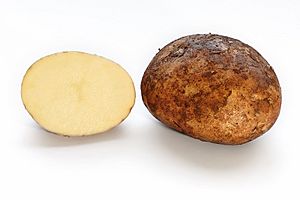
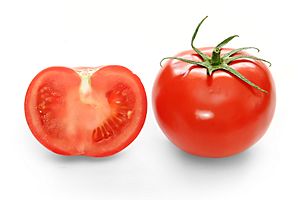
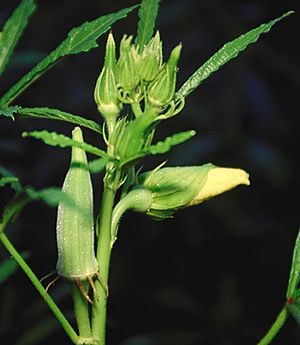
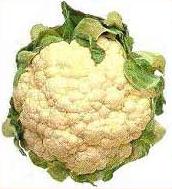
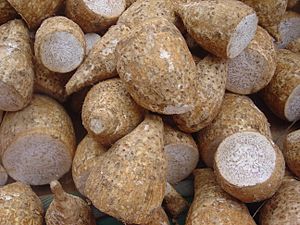
Contents
Vegetable Journeys
Many of the vegetables we eat daily have traveled a long way to reach our plates!
Spicy and Savory Vegetables
Chili peppers (mirch in Hindi) are super important for adding spice to Indian food. But guess what? They actually came from a region called Mesoamerica, which is in Central America. They arrived in India around the year 1550.
Garlic (lahsoon) adds a strong, delicious flavor to many dishes. It probably came from the Middle East. We don't know exactly when it arrived in India, but it has been used for a very long time.
Root Vegetables and Gourds
The humble potato (aloo) is a favorite in many Indian dishes. However, it didn't start in India! Potatoes originally came from South America, specifically areas like Peru and Bolivia. Portuguese traders likely brought them to India around the 1600s.
Similar to potatoes, the sweet potato (shakarkand) also has its roots in South America. It also made its way to India around the 1600s, likely through Portugal.
Taro (arbi or arwi) is a starchy root vegetable. Its exact origin is a bit of a mystery, but it might have come from India, Polynesia, or Southeast Asia.
Turnips (shalgham) have been in South Asia for a very long time, possibly since 1500 BC! They likely originated in West Asia or Eastern Europe.
The calabash (lauki or pankaj), a type of gourd, began its journey in China or Japan.
Leafy Greens and Pods
Cabbage (patta gobhi) is a leafy green vegetable that probably came from Europe. It arrived in India during the time when European countries had colonies there. It's actually related to wild mustard!
Cauliflower (phool gobhi) looks a bit like a white tree! It first grew in Cyprus, an island in the Mediterranean Sea. It was brought to India around the year 1822.
Coriander (dhaniya) is a popular herb used in many Indian dishes. It might have come from North Africa or the Mediterranean region. Arabs are thought to have introduced it to India around 1000 AD. It was even mentioned in ancient Egyptian texts!
Fenugreek (methi) is a leafy green and a spice. It came from the Near East and was likely introduced to India around 326 BC during Alexander the Great's travels.
Okra (bhindi), also known as lady's finger, is a popular green vegetable. It originated in the highlands of Ethiopia and India, arriving in India between 100 and 500 CE.
Onions (pyaaz) are a basic ingredient in almost all Indian cooking. They are believed to have originated in India and were present by 500 BCE. They are even mentioned in an ancient Indian medical text called the Charaka Samhita.
Moringa (murungai) is a nutritious tree whose leaves and pods are eaten. It is native to India.
Fruity Vegetables
The tomato (tamatar) is often thought of as a vegetable, but it's actually a fruit! It came from Latin America, from Mexico all the way to Peru. Like potatoes, Portuguese traders likely brought tomatoes to India around the 1600s.
Brinjal (baingan), also known as eggplant, is another popular vegetable that is technically a fruit. It originated in India or China.
Bitter Melon (karela) might have a unique taste, but it's a super healthy vegetable! It originally came from Africa.
Fruit Adventures
Just like vegetables, many fruits we love also have fascinating origins from around the world.
Sweet and Juicy Fruits
The mango (aam) is often called the "king of fruits" in India, and for good reason! It is native to India and has been enjoyed for thousands of years.
Oranges (santara) are juicy and sweet. They actually originated in India! A sweeter Indian variety was introduced to Europe by the Portuguese around the 15th century.
Tangerines (narangi) are similar to oranges and came from China.
Apples (seb) are a healthy and popular fruit worldwide. They originally came from Central Asia, specifically Kazakhstan. We don't know exactly when they arrived in India.
Plums (aloo bokhara) are sweet and tart fruits that originated in Armenia.
Unique and Tangy Fruits
Mulberries (shehtoot or toot) are small, sweet berries. They came from China or Japan. Did you know that white mulberries are not safe to eat, but red ones are very sweet?
Tamarind (imli) is known for its tangy, sour taste. It originated in Africa. This fruit has been mentioned in texts since the ancient Harappan times in India!

